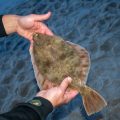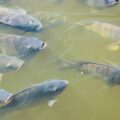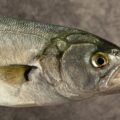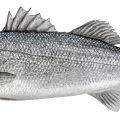Groupers and Sturgeon differ in physical appearance, biological characteristics, diet, habitat, lifespan, size, and many other factors. Groupers are a group of several species of fish in the family Serranidae, whereas Sturgeons are a family of fish in the Acipenseridae. The two fish often come up in the discussion of extremely large fish in the waters of our world. They both come in large sizes, and the taste of their meat also has similarities. However, that’s where their similarities end. There are many differences between a grouper and a sturgeon.
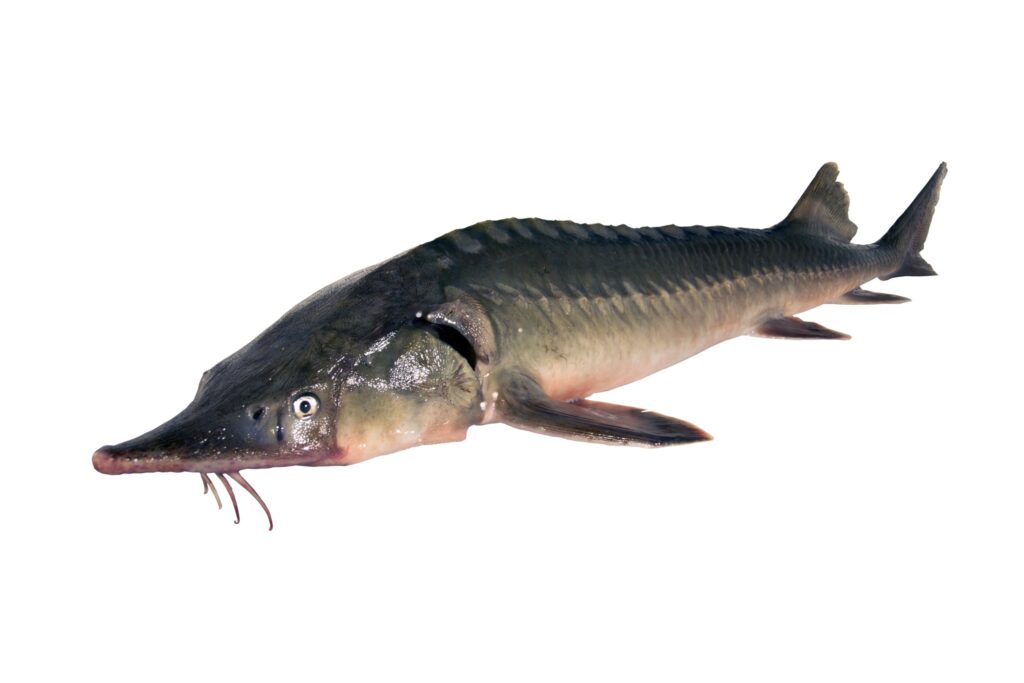
Classification differences between Grouper and Sturgeon
Both grouper and sturgeon are broad names covering several groups of fish. Whereas groupers are considered all the fishes under the subfamily Epinephelinae, sturgeon are a family of about 29 species under the name Acipenseridae. The family of sturgeons is divided into four genera: Acipenser, Huso, Scaphirhynchus, and Pseudoscaphirhynchus. They fall under the order Acipenseriformes. They are related to paddlefish in the family Polyodontidae.
Again, groupers are ray-finned fish belonging to the Serranidae family, Epinephelinae subfamily, and Perciformes order. The seabass is another member of the Serranidae family, but they are not considered groupers, so the subfamily is generally considered. The number of species under the subfamily is huge and carries excellent diversity among each other, in contrast to sturgeon. Typically, the term “grouper” is used to refer to fish from the two big genera, Epinephelus and Mycteroperca.
Habitat differences between Grouper and Sturgeon
The native habitat of sturgeons is the subtropical and temperate regions of the sub-Arctic rivers, lakes and coastlines included in Eurasia and North America. Some species of sturgeon live in freshwater environments exclusively, while others mainly inhabit marine waters near the coastal areas and often venture into the open ocean. However, most of these species are under threat of extinction, and one species has become entirely extinct.
In North America, sturgeons are found along the Atlantic Coast from the Gulf of Mexico to Newfoundland, including the Great Lakes and St. Lawrence, Missouri, and Mississippi Rivers. They’re also found along the West Coast in significant rivers from California and Idaho to British Columbia.
It further extends to the European Atlantic coast, including the Mediterranean basin, the rivers that flow into the Black, Azov, and Caspian Seas, the north-flowing rivers of Russia in the rivers of Central Asia, and Lake Baikal. In the Pacific Ocean, they are found in the Amur River along the Russian Chinese border.
Groupers reside primarily in shallow tropical waters, in contrast to coastal waters like sturgeon. They prefer to stay near coral and artificial reefs. They are most often found lingering near concrete structures at the bottom, like shipwrecks and ledges. They are also found on hard bottoms like rocks.
Grouper’s distribution is more specific compared to sturgeon. They can be found all along the Brazilian coast, the Bahamas, the Caribbean, the Florida Keys, and the Gulf of Mexico. Some of the species of groupers are under threat due to overfishing, but it is being regulated well. Other species are entirely safe, though they mature late and reproduce slowly, like sturgeon as well.
How to distinguish between Grouper and Sturgeon by appearance?
Sturgeons have elongated, spindle-shaped bodies. They are bluish-black or olive brown on the upper side of the body, while their sides are paler, and they have a white belly. Some of the distinctive characteristics they bear include heterocercal caudal fins (the upper lobe is longer than the lower lobe) like sharks and smooth skin without any scales like reptiles.
While they don’t have scales in their bodies, they do have five lateral rows of bony plates called scutes. These scutes running along their backs can be used to distinguish them easily. Like catfish, they have barbels, up to four in number, which they use as a sensory organ.
In the other hand, groupers have robust bodies. They can be as large or even larger than sturgeon but can be easily identified from the others thanks to their round, full bodies. Their eyes are present on both sides of their round heads. They have a much larger mouth compared to sturgeon, and that mouth can open very wide. The lower jaw usually bulges more outward than the upper jaw. Groupers tend to have different types of patterns and dots all over their bodies, which sturgeons don’t.
Simply speaking, you can identify a sturgeon by their long, thin bodies, several sharp thorn-like scutes running along their backs, a long and pointy rostrum or nose, four barbels below, and heterocercal tail. As for groupers, you can identify them with their round mouth, thick, stout and full bodies, spotted skin with various patterns, and homocercal tails.
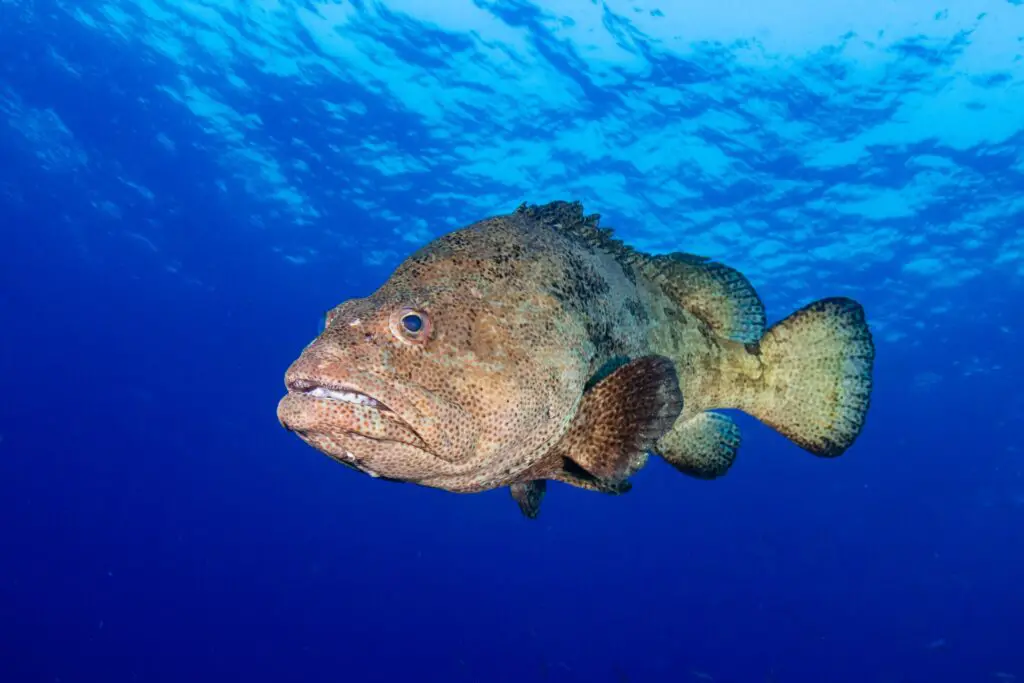
Size differences between Grouper and Sturgeon
The various species of sturgeon can grow up to different sizes, but most species grow very large. The size ranges from 2 to 3.5 m or 7 to 12 feet, but they can grow larger, especially the Beluga sturgeon. The largest sturgeon ever recorded was a female beluga captured in the Volga Delta back in 1827, with a massive size of 7.2 meters or 23 feet 7 inches long and weighing 1,571 kg. There have also been specimens reportedly observed that were roughly up to 26.2 feet, but those are extremely rare. On average, beluga sturgeon can attain up to 5.5 meters in average and weigh up to 2000 kilograms. Kaluga sturgeon also grow up to a similar size.
The same case goes for grouper fish. They can grow up to a great length but far less compared to sturgeon. The largest grouper ever recorded is assumed to be the Atlantic Goliath grouper (Epinephelus itajara) which was almost 8 feet in length. However, compared to sturgeon, as groupers are stouter and round, their weight is quite high in comparison to their length.
Biological differences between Grouper and Sturgeon
An interesting fact about sturgeons is that they have several primitive characteristics of bony fish. In fact, the earliest sturgeon fossils date back to the Late Cretaceous age, originating from the Early Jurassic period, which was 174 to 201 million years ago. However, their skeletons are almost entirely made of cartilage derived from their ancestors, who had bony skeletons. Most sturgeons grow slowly and mature late. Most of them live very long, some surviving up to 100 years of age and attaining sexual maturity at 20, but the average lifespan is around 50 to 60 years. They are polyploid, so some species have 4, 8, or 16 sets of chromosomes.
As for groupers, they can swim very fast, but they are not built for long-distance swimming. Their large mouths and strong gills can work together to form a powerful vacuum in the water which helps them pull in their prey from a considerable distance. They use the same mouth to dig in the substrate for food. Compared to sturgeon, the lifespan of grouper is extremely short. Most live up to only 10 to 15 years on average. The longest-living grouper ever recorded was 37 years old. However, Goliath Groupers, the giant of them all, is assumed to be able to live on a little longer, perhaps up to around 50 years.
Groupers display an interesting phenomenon called sexual dimorphism. All groupers are born female, but some of them can change their sex to male after attaining sexual maturity. The transformed male can reproduce with an untransformed female and maintain the continuity of the species.
Dietary differences between Grouper and Sturgeon
Most sturgeon are bottom feeders. Their diet mainly includes invertebrates, such as crustaceans, worms, and mollusks. Shellfish and different gastropods constitute a big portion of their diets. They also feed on other bottom-dwelling fish like sand lance. Despite being such massive fish, they do not prey on every smaller fish they find.
The diet of groupers is more or less the same, as they are also bottom feeders. Groupers live on crustaceans like crabs, lobster and shrimps for most of their early life. Once they grow a little, older and bigger in size, they add smaller fish as well as octopuses to their diet.
However, there are still some differences between the diets of the two fish. For example, some groupers, the giant ones that are, even feed on sharks and barracudas. Sea turtles are another unique part of the grouper’s diet. Sturgeons are not typically seen hunting octopuses, turtles, or sharks. On the other hand, groupers do not typically like eating gastropods and mollusks.
The taste difference between Grouper and Sturgeon
There is a distinct difference between the tastes of grouper and sturgeon fish. While groupers have a mild taste which allows them to be cooked with various types of seasoning to give it a variety of tastes, the same freedom isn’t there in the case of sturgeon. Sturgeon has a very strong and fishy taste. The flesh is naturally salty, which is why it’s often paired up with vodka. Since they have no small bones, it’s easy to eat.
The meat of both grouper and sturgeon is white, and the filet is flaky. Grouper has a more tender texture compared to sturgeon. Sturgeon also has a mild and delicate flavor but is comparatively stronger than that grouper. Some people do not like the fishy taste of sturgeon, but it can be cooked in ways that can mitigate that odor to a great extent.
Sturgeon’s texture is like chicken breast, while grouper’s flakes are often compared to lobster or crab. Grouper’s meat is also much sweeter than that of sturgeon, so it appeals to more taste buds. Red groupers are usually sweeter than black groupers, but that may differ depending on the species and location. Groupers have a higher moisture content than sturgeon.
Nutritional differences between Grouper and Sturgeon
Sturgeon’s flesh is rich in protein, containing several essential amino acids. In fact, sturgeon is rich in as many as eight essential amino acids. Not to mention it has a higher crude protein content than pork, eggs, river crabs, carp, crucian carp, and bighead carp. They also contain higher potassium and phosphorus amounts than pork, beef, chicken, eggs, prawns, river crabs, and different common fish.
Sturgeon flesh also has great medicinal value. While it has similarities to sharks, its anticancer factor or bioactive active ingredient is 15-20 times higher than a shark’s. Sturgeon’s gills can contribute to heat-clearing and detoxification, whereas their oil can work wonders for scalds.
Since groupers are both herbivorous and carnivorous bottom feeders, their diet is varied, and their flesh is filled with high amounts of proteins and Omega-3 fatty acids. It’s also an excellent source of different types of vitamins and minerals that are essential to our body.
In fact, a serving of only a single filet of grouper fish can supply you with 25 percent of your vitamin D needs, 15 percent of iron, 20 percent of magnesium, as well as a small number of B-complex vitamins. Moreover, grouper contains just the right amount of calories. The number of saturated fats being less, the risk of heart disease is almost close to none.
However, as much as the benefits of groupers will attract you, they can also be harmful to you. The body of groupers contains high levels of mercury, which is the case for most bottom-dwelling large-sized fishes. That’s why consuming high amounts of grouper flesh can lead to mercury poisoning, which is not an easy condition to deal with. It’s best to limit the consumption of grouper meat to a meal during a vacation rather than something regular.
Comparatively, there is no such risk when it comes to eating sturgeon. However, eating sturgeon is still discouraged and even illegal in some places. Most species are critically endangered, while the remaining ones are under threat, all due to overfishing. So even if you catch a sturgeon while fishing, never take it home.

